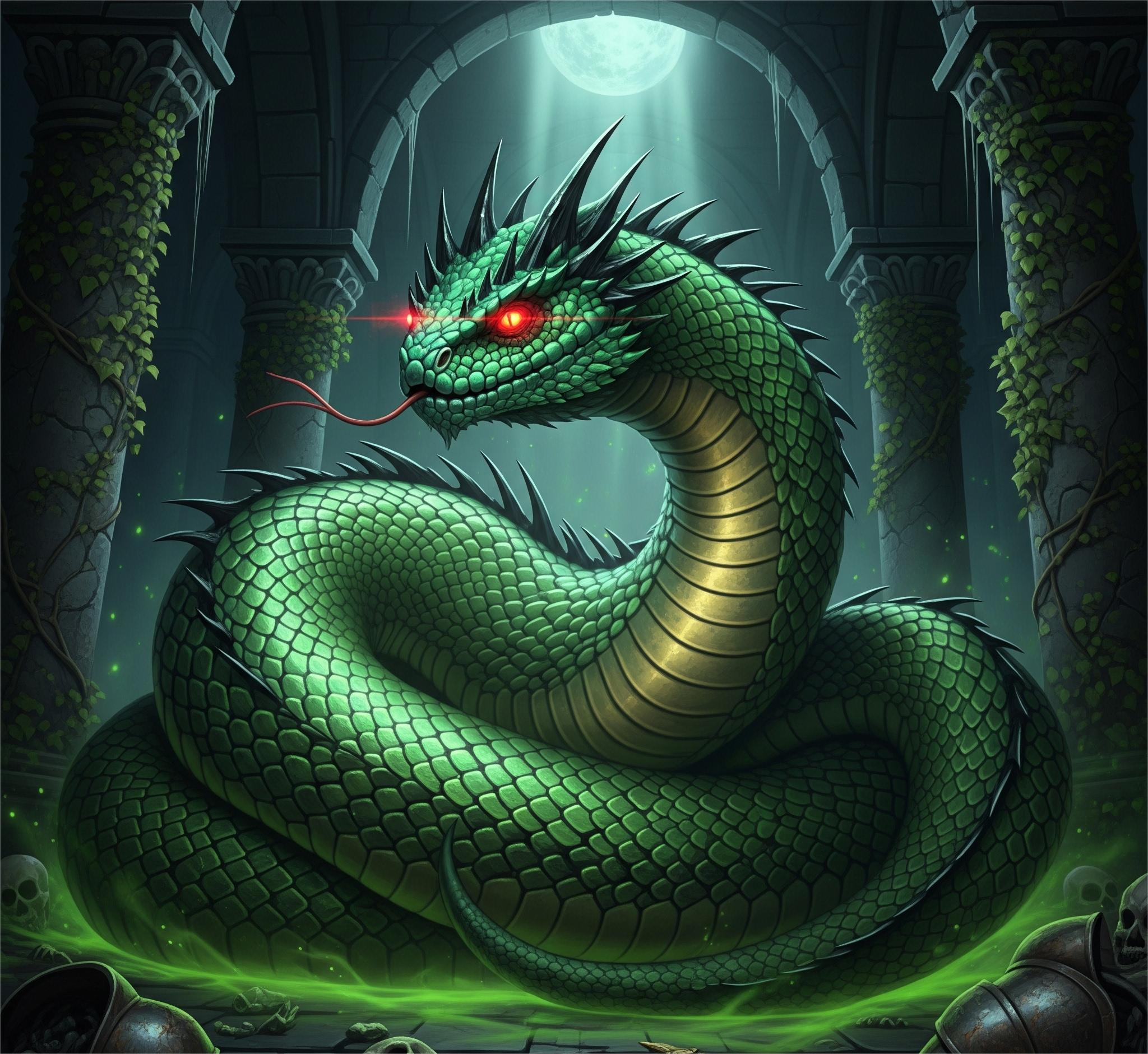In the tangled forests of medieval bestiaries and the margins of ancient manuscripts lurks a creature of terrifying power and hypnotic myth: the basilisk, often dubbed the “king of serpents.” Feared for its deadly gaze, venomous breath, and supernatural authority, the basilisk occupies a unique place in European folklore—a symbol of lethal majesty and the mysterious boundaries between myth and reality.
Origins in Antiquity: Pliny the Elder and Classical Roots
The earliest known references to the basilisk appear in ancient Greco-Roman texts, particularly in the Naturalis Historia of Pliny the Elder, a Roman naturalist writing in the 1st century CE. Pliny describes the basilisk as:
“...a snake not more than twelve fingers in length, with a white spot on its head like a crown. It kills all shrubs, scorches the grass, and splits rocks with its hiss.”
Pliny attributes its name—“basiliskos,” Greek for “little king”—to this crown-shaped marking and its supposed dominion over all serpents. According to his account, even its mere breath or glance could kill, making it a creature so dangerous that no man or beast could survive an encounter.
This classical basilisk was more of a small, deadly serpent than the chicken-lizard hybrid it would later become in medieval lore.
Medieval Transformation: From Snake to Serpent-Chicken
By the Middle Ages, the basilisk’s image had mutated dramatically, especially through the writings of Isidore of Seville (7th century) and the popular bestiaries of the 12th to 14th centuries.
The myth now held that a basilisk could be hatched from a serpent’s egg incubated by a rooster—a concept as bizarre as it was terrifying. This gave rise to a hybrid form, resembling a rooster with a serpent’s tail, or sometimes a dragon-like creature with bird features.
Medieval bestiaries described the basilisk as:
Able to kill with a glance or breath
Leaving scorched earth in its path
Vulnerable only to the weasel (its natural enemy) or to seeing its own reflection—a motif later echoed in literature like the Harry Potter series.
This evolution from classical snake to monstrous hybrid reflected the medieval fascination with moral allegory, as the basilisk came to symbolize sin, pride, and Satanic evil—deadly, deceptive, and unholy.
Lethal Powers and Defensive Myths
Legends of the basilisk emphasized its sheer lethality. Among the deadly attributes:
A single look could kill: It turned men to stone or struck them dead on sight.
Its breath was poisonous: Enough to wither plants, corrode metals, and blight entire landscapes.
Its very touch spread death: Merely brushing against its trail could kill other animals.
To protect against a basilisk, people believed in:
Mirrors, which could reflect its deadly gaze back upon itself.
Weasels, immune to the basilisk’s powers and able to slay it.
Rooster crows, which supposedly terrified the beast into flight or death.
Such stories were more than just scary tales—they were seen as spiritual metaphors, reminding readers of the dangers of unchecked sin and the power of purity to defeat evil.
Alchemical and Occult Symbolism
During the Renaissance and early modern period, the basilisk took on symbolic weight in alchemical texts. Often linked with sulfur, poison, or destruction, it represented:
The destructive phase of transformation in alchemy.
The combustive, purifying force necessary before renewal.
The chaotic but essential force within the natural world.
Occult writers and thinkers even debated whether basilisks ever existed, blurring the line between zoology and magic. As with many creatures of legend, their true power lay not in biology but in belief.
In Literature and Popular Culture
The basilisk’s myth continued to evolve in literature:
In Shakespeare’s plays, the basilisk appears metaphorically as a killer by glance—"Mine eyes are like the sea for love... they slay me with a basilisk’s look."
In J.K. Rowling’s Harry Potter and the Chamber of Secrets, the basilisk is a giant serpent that petrifies or kills with its gaze, only defeated with a sword and phoenix tears.
It appears in video games (like Dark Souls and The Witcher), films, and fantasy novels, symbolizing both horror and royalty.
These appearances reflect the enduring mythic magnetism of the basilisk—deadly, majestic, and ancient.







